three layers of blood vessels from outside to inside
tunica externa:outermost layer, contains collagen fibers
tunica media: middletunic, smooth muscles
tunica intima: endothelium, innermost layer
a blood vessel supplying blood to the larger blood vessel is called
vasa vasorum
list the types of blood capillaries
continuous:gas exchange, found in brain, testes, lungs etc. least permeable and most common
fenestrated: active filtration and absorption, found in kidneys and small intestines
sinusoid: most permeable, found in liver, spleen, and especially bone marrow, lymphnodes
anatomy of capillary bed
arteriole > precapillary sphincter > true capillary and metaarteriole > venule
____ are the capacitance blood vessels that holds up to ___ of blood
veins; 65%
Normal range of systolic blood pressure is
100 - 140 mmHg
when recording pulse, one should note:
rate, rhythm, volume, characteristics of an artery
force per unit area exerted on an interior of a vessel wall by the contained blood is called
blood pressure
the types of blood vessels circuits
pulmonary and systemic
high blood pressure in pulmonary vasculature is called
pulmonary hypertension
high blood pressure in systemic vasculature is called
systemic hypertension
opposition to the blood flow is called
vascular resistance
higher the friction, the higher the:
resistance
increase in blood viscosity will increase the ___ and __ the resistance
friction; higher
polycythemia will____ the friction and thereby___ resistance
increase; increase
anemia will___ the friction and thereby___ resistance
decrease; decrease
increase in the length of blood vessel will___ the resistance to blood flow
increase
increasing the diameter of blood vessel will___ the resistance to blood flow
decrease
Resistance is____ proportional to length of blood vessels
directly
Resistance is____ proportional to diameter of blood vessel
inversely
Higher the turbulent flow___ the resistance in blood vessels
higher
Difference in blood pressure between any two points in a blood vessel is the
blood pressure
Rate of flow of blood is___ proportional to the difference of blood pressure at any two points in circulation
directly
rate of flow of blood is___ proportional to resistance in a blood vessel
inversely
Define pulse pressure
difference between systolic and diastolic blood pressure
increasing the diameter of blood vessel will___ the resistance to blood flow
decrease
blood flow = resistance/blood pressure
false
Net filtration rate from a capillary is equal to
NFP = (HPc - HPif) - (OPc - OPif)
force per unit area exerted on the wall of a blood vessel by its contained blood is called
blood pressure
the blood pressure in the capillaries ranges from to 20 to 40 mmHg
true
the coronary arteries arises from the
aorta
the inferior vena cava brings blood from the lower regions of the body and empties into the
right atrium
the major long term mechanism of blood pressure control is provided by the
kidneys
reduction in lumen diameter of a blood vessel as the smooth muscle contracts is known as
vasoconstriction
the increase in lumen diameter of a blood vessel as the smooth muscle relaxes is known as
vasodilation
exchange of gases and nutrients occurs by diffusion between the
capillaries and tissue cells
any condition in which blood vessels are inadequately filled and blood cannot circulate normally is called
circulatory shock
which of the following regulates blood flow at the entrance of each true capllary
precapilllary sphincter
the common hepatic, left gastric, and splenic arteries are the branch of which of the following atery
celiac trunk
which of the following types of blood vessels have the thickest tunica media of all vessels
elastic arteries
which of the following conditions may not develop the varicose veins
walking on heels with pressure on the calf muscles
at any given time, up to 65% of the body's blood supply is found in
veins
most neural controls of blood pressure involve the input from baroreceptors that are sensitive to
changes in blood pressure
which of the following blood vessels is the most susceptible to atherosclerosis
the aorta
the heart produces a hormone called atrial natriuretic peptide that causes blood volume and blood pressure to decline
true
the device used to measure blood pressure is called
sphygmomanometer
the device used for listening to the breath sound is called___ and the sound produced by the blood flow through the narrow blood vessel during blood pressure measurement is called___ sound
stethoscope; sounds of korotkoff
which of the following is a component of short term mechanism of blood pressure control?
baroreceptor control, chemoreceptor control, carotid sinus reflex, aortic body reflex
superior vena cava is formed by the union of which of the veins
right and left brachiocephalic vein
which of the following arteries gives rise to common hepatic, left gastric, and splenic arteries?
celiac trunk
which of the following veins is the longest in the body
great saphenous vein
posterior intercostal arteries are branches of
aorta
basilic vein (superficial vein) is located
medially in the upper limb
which of the following is true of femoral blood vessels
femoral vein is located medial to femoral artery
superior and inferior vena cava, coronary sinus, anterior cardiac veins are the major blood vessels entering the
right atrium
a thrombus in the first branch of the arch of the aorta would affect the flow of blood to the
right side of the head and neck and right upper arm
the aorta
ascending aorta
aortic arch
brachiocephalic trunk (right/left)
subclavian artery (left/right)
subclavian carotid artery (right/left)
common carotid artery (right/left)
internal/external carotid artery
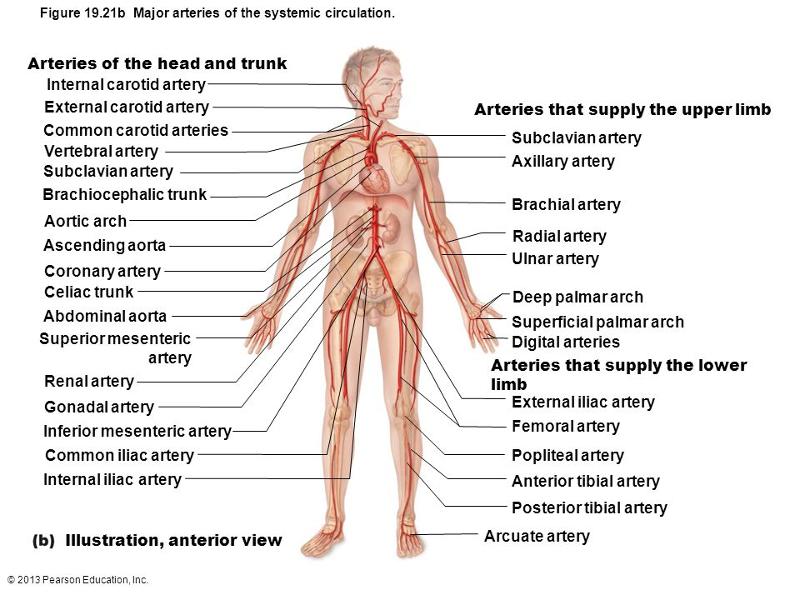
external common carotid artery supplies blood to the head and neck
internal common carotid artery supplies the brain
subclavian goes to the upper limb
internal/external carotid artery
subclavian artery
axillary artery
brachicephalic trunk
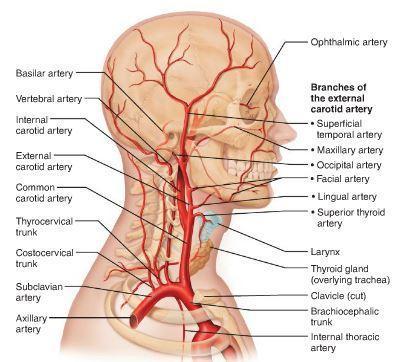
middle cerebral artery
internal carotid artery
circle of willis (vertebra artery, pontine artery, basilar artery, post cerebral artery,middle cerebral artery, anterior communicating artery, anterior cerebral artery, internal carotid artery, posterior communicating artery)
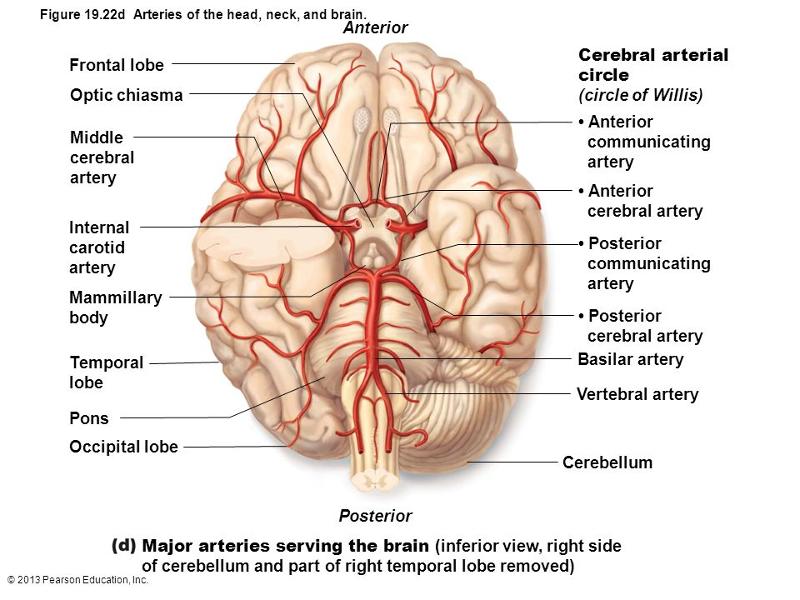
right subclavian artery
left subclavian artery
brachiocephalic trunk
posteruir intercostal artery
internal thoracic artery
brachial artery
axillary artery
radial artery
ulnar artery
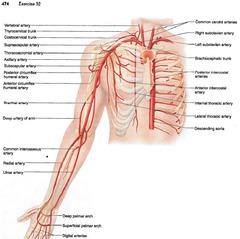
celiac trunk
common hepatic artery
gastroduodenal artery
right/left gastric artery
splenic artery
left/right gastroepoploic artery
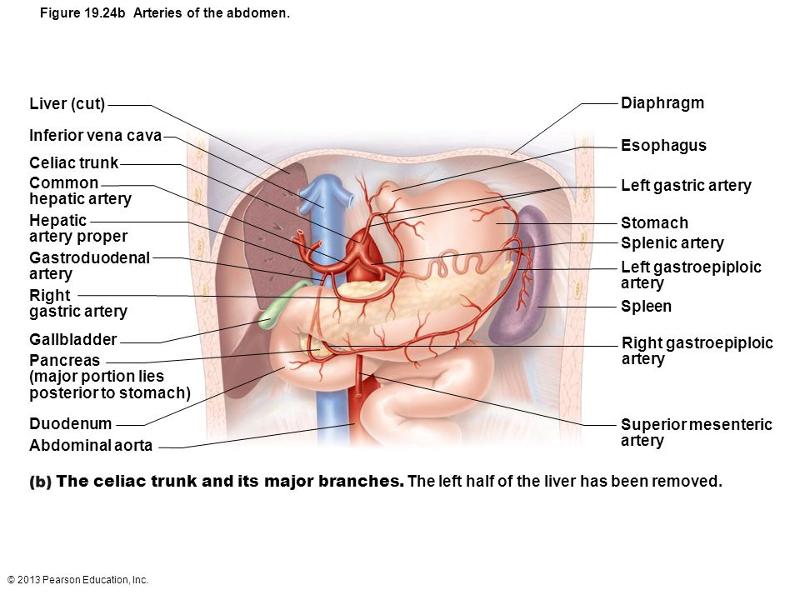
adrenal (suprarenal) gland
middle suprarenal artery
renal artery
superior mesentric artery
gonadal artery
inferior mesenteric artery common artery
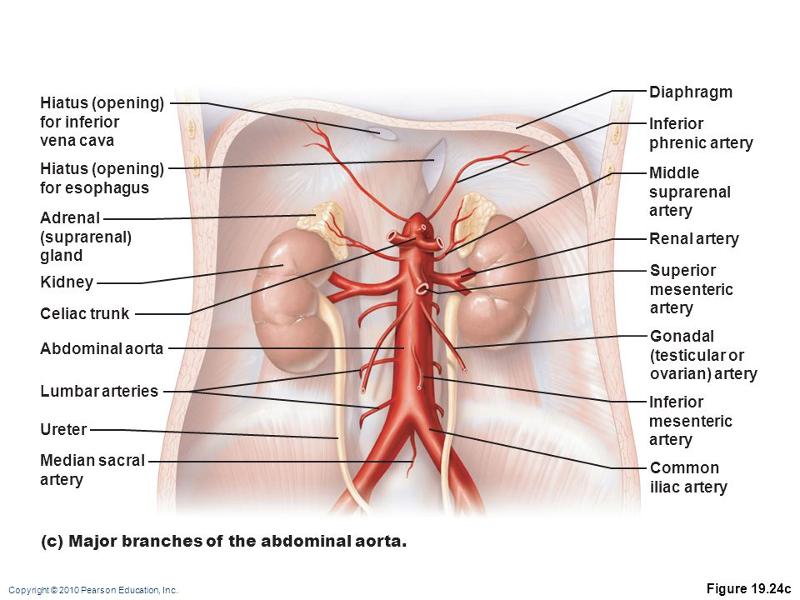
common iliac artery
internal iliac artery
external iliac artery
femoral artery
popliteal artery
anterior tibial artery
posterior tibial artery
fibular artery
dorasalis pedis artery
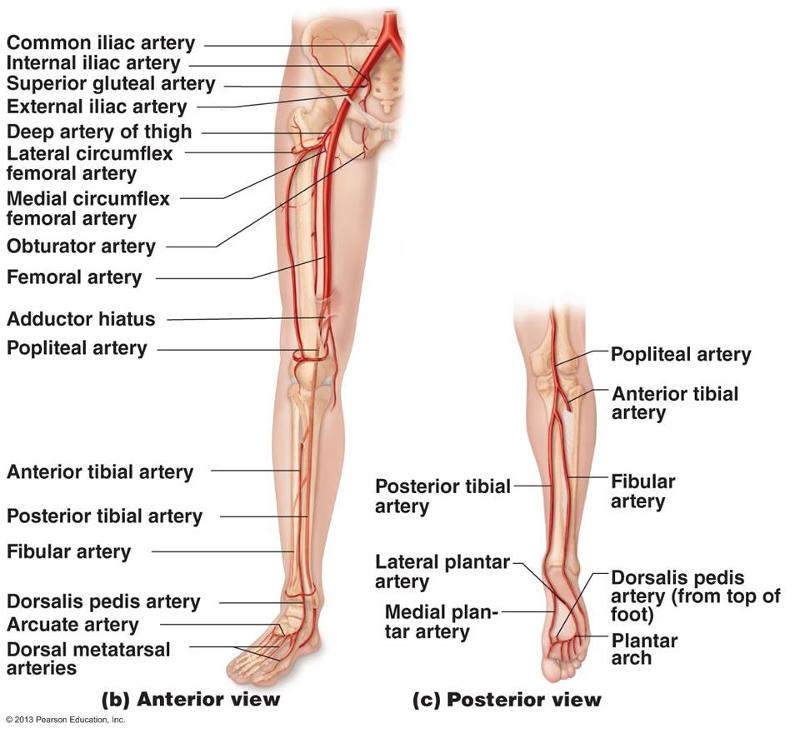
external jugular vein
internal jugular vein
subclavian vein
superior sagittal sinus
inferior sagittal sinus
straight sinus
transverse sinuses
sigmoid sinus
jugular foramen
right internal jugular vein
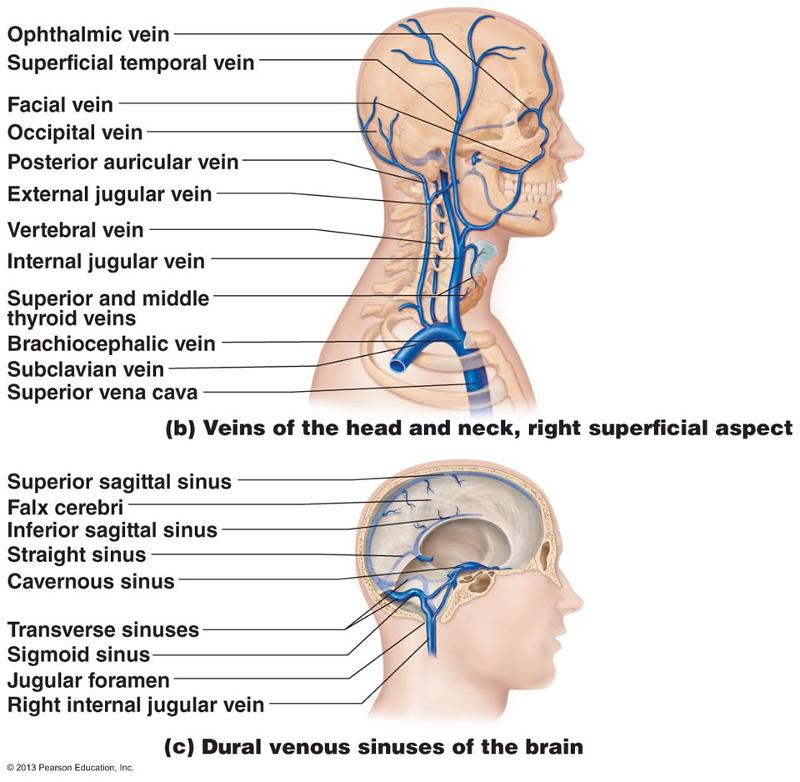
external/internal jugular veins combine to give rise to common iliac vein, common iliac vein combines to give rise to inferior vena cava
brachiocephalic veins
axillary vein
brachial vein
basilic vein
internal jugular vein
external jugular vein
superior vena cava
median cubital vein
cephalic vein
radial vein
basilic vein
ulnar vein
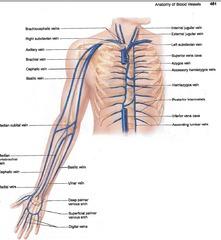
inferior vena cava
right suprarenal vein
left suprarenal vein
renal veins
left gonadal vein
common iliac vein
internal iliac vein
inferior mesenteric vein
superior mesenteric vein
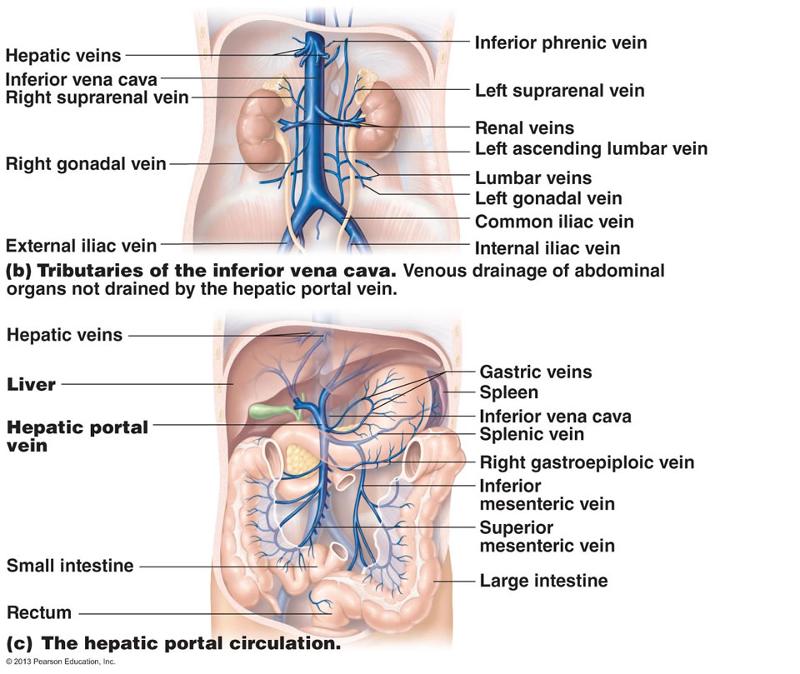
left renal vein is longer, right renal vein is shorter
popliteal vein
fibular vein
anterior tibial vein
internal iliac vein
external iliac vein
femoral vein
great saphenous vein
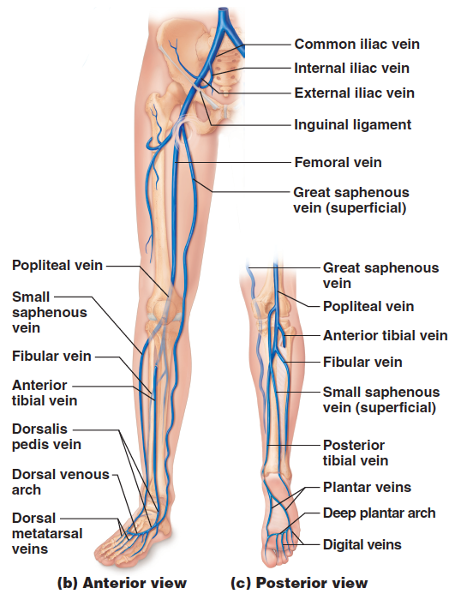
portal system
a set of capillaries arising from an organ,, that enters into another organ and breaks down into another set of capillaries